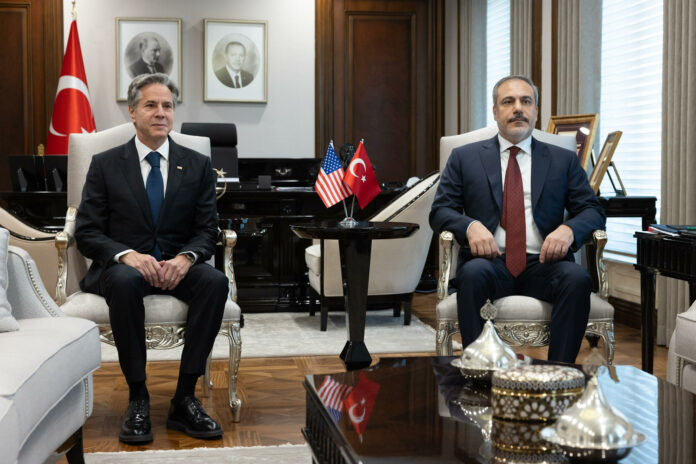US Secretary of State Antony Blinken toured the Middle East and Turkey this week, concluding his trip with a statement to the press on November 6. The purpose of his trip was to “to prevent the conflict from spreading through other parts of the region,” to “grow and expand NATO” in the general area and to “expand humanitarian assistance” to Gaza.
“One of the common denominators that I’ve heard throughout this trip is the imperative of American engagement, American leadership,” said Blinken in his statement to the press. “Every country I talk to is looking for us to play a leading role with our diplomacy to try to make progress on all of these different aspects of the crisis.”
But the American role in the conflict is not quite as clear as perhaps it should be.
While Blinken says, “We’ve engaged the Israelis on steps that they can take to minimize civilian casualties. [And] we’re working… very aggressively on getting more humanitarian assistance into Gaza,” it’s unclear how that meshes with the possibility of sending more bombs to Israel.
According to a letter obtained by the New York Times, the State Department cleared a sale of $320 million in precision bombs for Israel on October 31. This is in addition to the recent House vote on Israel funding on November 2, when the House passed $14.3 billion in aid for Israel.
It’s the bombing of Gaza that has created the need for humanitarian aid. Israel has allowed little food and water into the enclave and 1.4 million people are homeless, sleeping in hospitals that are targeted by bombs or in the rubble.
The State Department reiterated that a decades-old plan, the two-state solution, might be the “sole viable path for durable security and durable peace for Israelis and Palestinians,” says spokesperson Vendant Patel.
But a two-state solution would mean going back to 1967 borders, which Israel has already shown it has no intention of doing. This was demonstrated by PM Benjamin Netanyahu in the map he showed during his UNGA speech in September that showed Palestinian territory under Israeli control. With the almost-complete destruction of Gaza, formerly home to some 2 million people, there isn’t even a tenable area for the Palestinians to have their own state.
The situation recalls that of the Iraq War, which saw a country devastated and over a million innocents killed and others detained, only to discover later that Saddam Hussein was not, in fact, developing “weapons of mass destruction.”
“It was in Israel’s foremost interest that the United States take the lead in the war against Iraq,” say authors Richard T. Hull, Randall E. Osborne and Paul Kriese in Global Community: Global Security. The book also quotes Washington Post journalist J. Kayer in August 2002, “Israel is urging United States’ officials not to delay a military strike against Iraq’s Saddam Hussein.”
American engagement in Gaza could indeed change the most pressing humanitarian aspects of the conflict. That’s if American officials press harder for a ceasefire instead of sending precision bombs.
Only a turnaround in policy would put America back into the leadership position it lost over time by fighting Israel’s wars.
IP Correspondent






